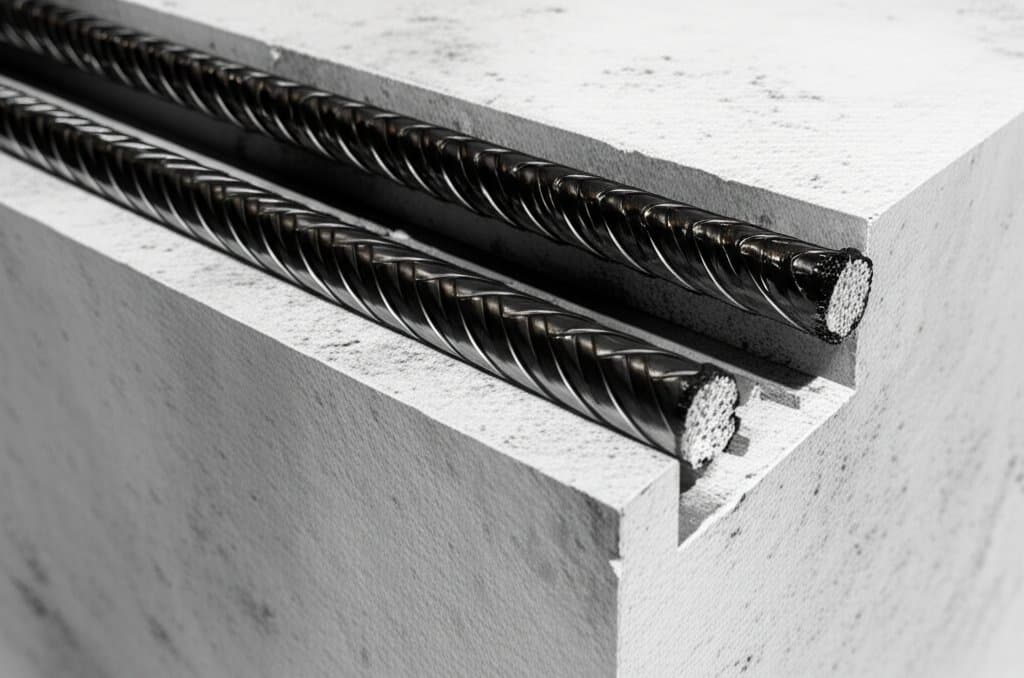Carbon Fiber Rebar: A Cost-Saving Revolution in Construction
Carbon fiber rebar is transforming the way we approach concrete construction, offering a powerful alternative to traditional steel reinforcement. This innovative material is not only lighter and stronger, but it also eliminates the persistent problem of corrosion, leading to significant long-term savings. While the initial investment may be higher, the reduction in repair and maintenance costs, often by as much as 75 percent, makes it a compelling choice for builders and homeowners alike. Let us explore why this material is gaining traction and how it can benefit your next project.
Why Carbon Fiber Rebar Stands Out
At first glance, carbon fiber rebar appears as unassuming black rods with a slightly textured finish. Beneath the surface, however, lies a high-performance composite of carbon fibers embedded in a durable polymer resin. This unique combination delivers a strength-to-weight ratio that far surpasses steel, making it a standout option for modern construction.
Key advantages include:
- Corrosion Resistance: Unlike steel, carbon fiber does not rust, ensuring structural integrity even in harsh, moisture-heavy environments.
- Lightweight Design: Weighing roughly one-quarter of steel, it simplifies transportation and installation, reducing labor costs.
- Superior Strength: With higher tensile strength, it resists cracking and deformation under stress better than traditional materials.
- Non-Conductive Properties: It remains unaffected by electrical currents or magnetic fields, adding an extra layer of safety in specific applications.
These properties position carbon fiber rebar as a forward-thinking solution, particularly in projects where durability is paramount.
Addressing the Challenges of Adoption
Despite its many benefits, carbon fiber rebar is not without drawbacks. The most notable challenge is the upfront cost, which can be two to three times higher than steel. For projects with tight budgets, this initial expense can be a significant barrier.
Additionally, its relative novelty means that not all contractors are familiar with handling or installing it. Some may lack the experience or confidence to incorporate it into their work, potentially leading to delays or hesitation. Furthermore, while it excels in corrosion resistance, its lower flexibility compared to steel may limit its suitability for certain structural designs requiring specific bending capabilities.
Ideal Applications for Maximum Impact
Carbon fiber rebar shines brightest in environments where moisture and corrosion pose constant threats. Coastal residences, bridges exposed to saltwater spray, parking garages subject to de-icing salts, and basements prone to dampness are prime candidates for this material. In such settings, the risk of steel degradation is high, often leading to frequent and costly repairs.
For homeowners building a long-term residence, investing in carbon fiber rebar for foundational elements can prevent future headaches. Imagine a structure where hidden rust and cracking are no longer concerns; the durability of this material offers that kind of assurance, making it a worthwhile consideration for critical areas of construction.
Practical Strategies for Implementation
To make the most of carbon fiber rebar, thoughtful planning is essential. Consider these actionable tips to integrate it effectively into your project:
- Focus on Long-Term Value: While the initial cost is steep, evaluate the lifecycle savings. Reduced maintenance and repair expenses over decades can offset the upfront price, especially in high-risk areas.
- Engage Contractors Early: Discuss the use of carbon fiber rebar during the planning phase. This allows builders to source materials, assess costs, and ensure they have the necessary expertise before construction begins.
- Adopt a Hybrid Approach: If budget constraints are a concern, use carbon fiber rebar selectively in moisture-prone sections like foundations or exterior walls, while relying on steel for less vulnerable areas. This balances cost with performance.
By applying these strategies, you can harness the benefits of this material without overextending your resources.
Building Confidence in Your Decision
Once the concrete is poured, the rebar becomes invisible, yet its role in the structural integrity of your build remains critical. Choosing carbon fiber means investing in a foundation designed to withstand the test of time, particularly in challenging conditions. This decision not only protects your property but also minimizes the likelihood of unexpected repair costs disrupting your plans years down the line.
Frequently Asked Questions
Is carbon fiber rebar stronger than steel?
Yes, it offers greater tensile strength, meaning it can endure more pulling force without breaking or deforming.
Does it truly resist corrosion completely?
Absolutely, as a non-metallic composite, it contains no elements that can rust or corrode, even in wet conditions.
Is the higher initial cost justified?
In regions with high moisture or salt exposure, the savings on maintenance and repairs often make it a financially sound choice over time.
Can carbon fiber and steel rebar be used together in one project?
Yes, many builders combine both materials to optimize cost and durability, using carbon fiber in high-risk areas and steel elsewhere.
Will my contractor be familiar with this material?
Experience varies, so raise the topic early to confirm their comfort level or allow time to consult with suppliers for guidance.
Securing Your Structure for the Future
As you plan your next construction project, weigh the advantages of carbon fiber rebar against your specific needs and environment. Assess the areas most vulnerable to corrosion and consider how this material could safeguard your investment. By prioritizing durability and engaging with knowledgeable professionals, you can build structures that stand strong for generations, free from the hidden damages that often plague traditional materials.
